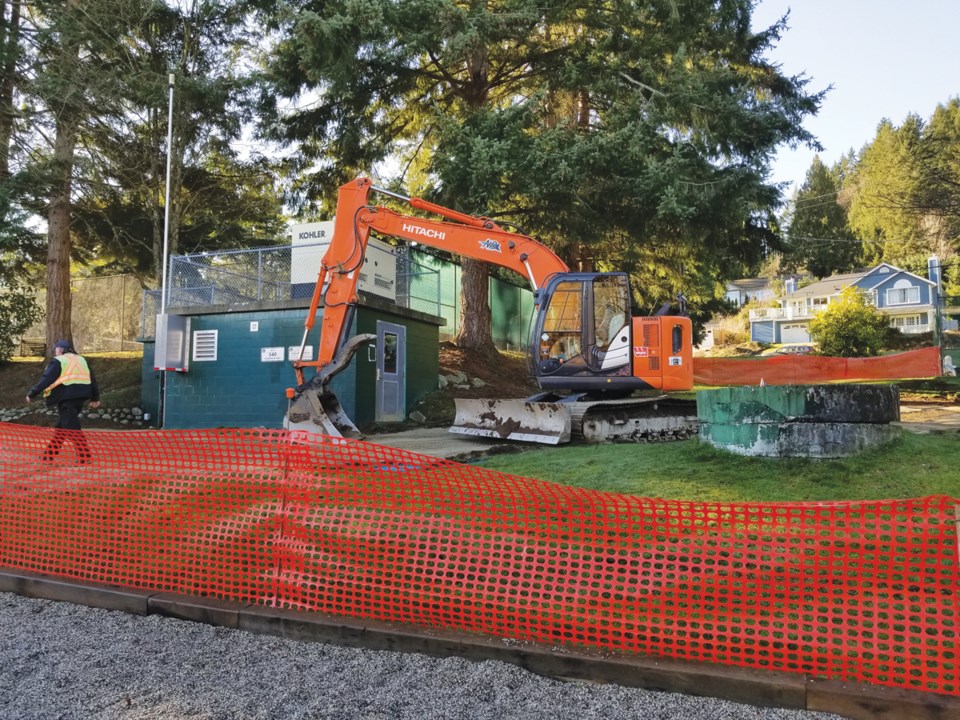Gibsons council has given the first three readings to a 2019 budget that will see residential property taxes rise by 7.5 per cent and business taxes increase by three per cent.
According to background reports from director of finance Dave Douglas, that would work out to about $75 more for the town portion of the taxes on the average residential property. When taxes for school, police, Sunshine Coast Regional District (SCRD) services and the Hospital District are included, the increase is around $113.
The budget represents an increase of roughly five per cent in general operating expenses and major capital projects that include a $2.1-million upgrade to the sewer treatment plant, $472,000 for phase 2 of the Gibsons Way upgrades, $363,000 in paving work, and $60,000 to repair damage to Franklin and Pebbles beaches from a December 2018 storm.
Councillors also gave the nod at the April 30 special meeting for staff to go to residents for approval to borrow around $5 million for two major water and sewer infrastructure projects planned for the current budget year.
Director of infrastructure services Dave Newman said long-term borrowing of up to $3.3 million will be needed to complete the Zone 3 water project, allowing the town to disconnect from the Sunshine Coast Regional District’s water service.
And a loan of $1.7 million will be needed to for upgrades at the Prowse Road lift station, a part of the town’s sewer system.
Newman also updated council on the status of the Zone 3 project, including results from a new supply well drilled in Dougall Park. “Unfortunately, the new supply well did not produce the amount of water required, so an additional well will need to be drilled to allow reliable service into Zone 3,” Newman said.
Newman’s report went on to say, “This lower production was not any indication of the amount of water available in the aquifer. Rather, it was a function of the subsurface material that the well was drilled into, which was finer and had lower transmissibility properties than any of the other town wells.”
Newman said while bringing the new well, known as Well 5, online could supply as many as 6,000 people under normal demand conditions, it wouldn’t produce enough water to supply the maximum daily demand if any of the other wells was out of service.
Newman recommended proceeding with drilling and commissioning a Well 6, which adds about $580,000 to the total project cost to bring it to just under $3.4 million. Of that, $70,000 would come from reserves while the rest would be covered by the loan, if approved.
The proposed location for Well 6 is near Oceanmount Boulevard, and Newman said it has the potential to deliver water for 7,200 people during an average demand period and 6,000 at peak demand.
“Oceanmount was actually our first choice, but we did not pursue it because of the fact that the [Sunshine Coast] Regional District was drilling nearby and we would have run into interference,” Newman said in response to questions from council.
Newman also said he’s confident future conflict over tapping into the aquifer supply will be avoided through the regional governance model on water the town is working on with other local governments.
Mayor Bill Beamish suggested part of the planning for future water projects should include a review of developments that have been approved, but not fully built. “We are fast approaching 5,000 population right now, with approximately 600 units of housing approved. It would be good to take a look and see where are we in terms of approaching the capacity of our water system based on the current wells,” Beamish said.
Coun. Stafford Lumley made similar comments. “The regional district has all these problems supplying water and there’s no shortage of continued development, so I think it’s a smart thing to do… I’d like to not get in that scenario they find themselves in,” he said. “We could be smarter and more proactive than that.”
Newman said projected water usage with Zone 3 added would be equivalent to what the town was using in 2012 for just Zones 1 and 2, before introducing metering.
“That gives me a level of comfort that we’re still below what we’ve already been drawing from the aquifer.”
Both loans require resident approval, either through a referendum or an alternate approval process (AAP). Council voted to begin an AAP for the Prowse Road lift station this month, with a deadline of June 12.
The AAP for the Zone 3 project will come later, and council voted to authorize spending $200,000 to drill a test well at the Oceanmount site ahead of the AAP.



